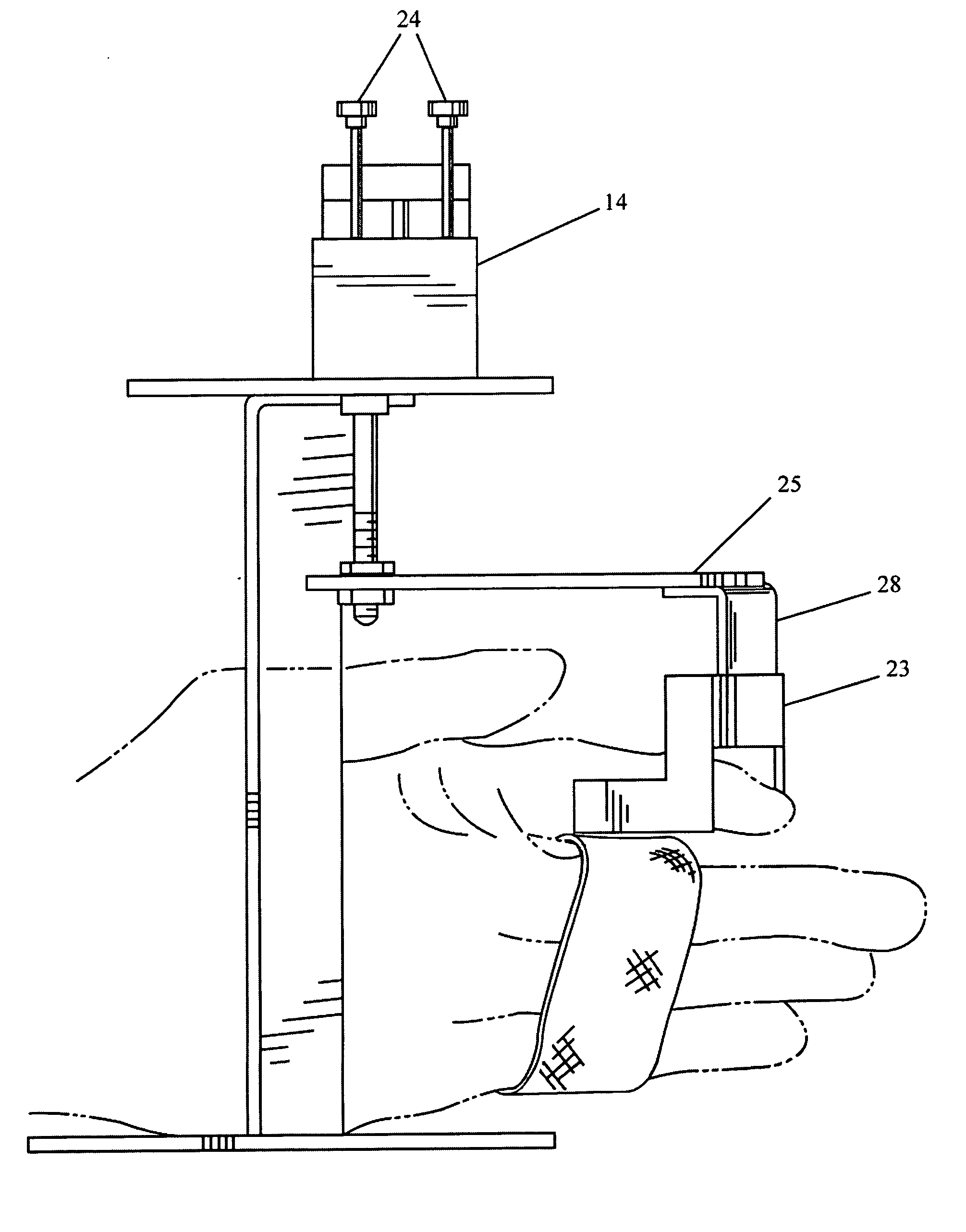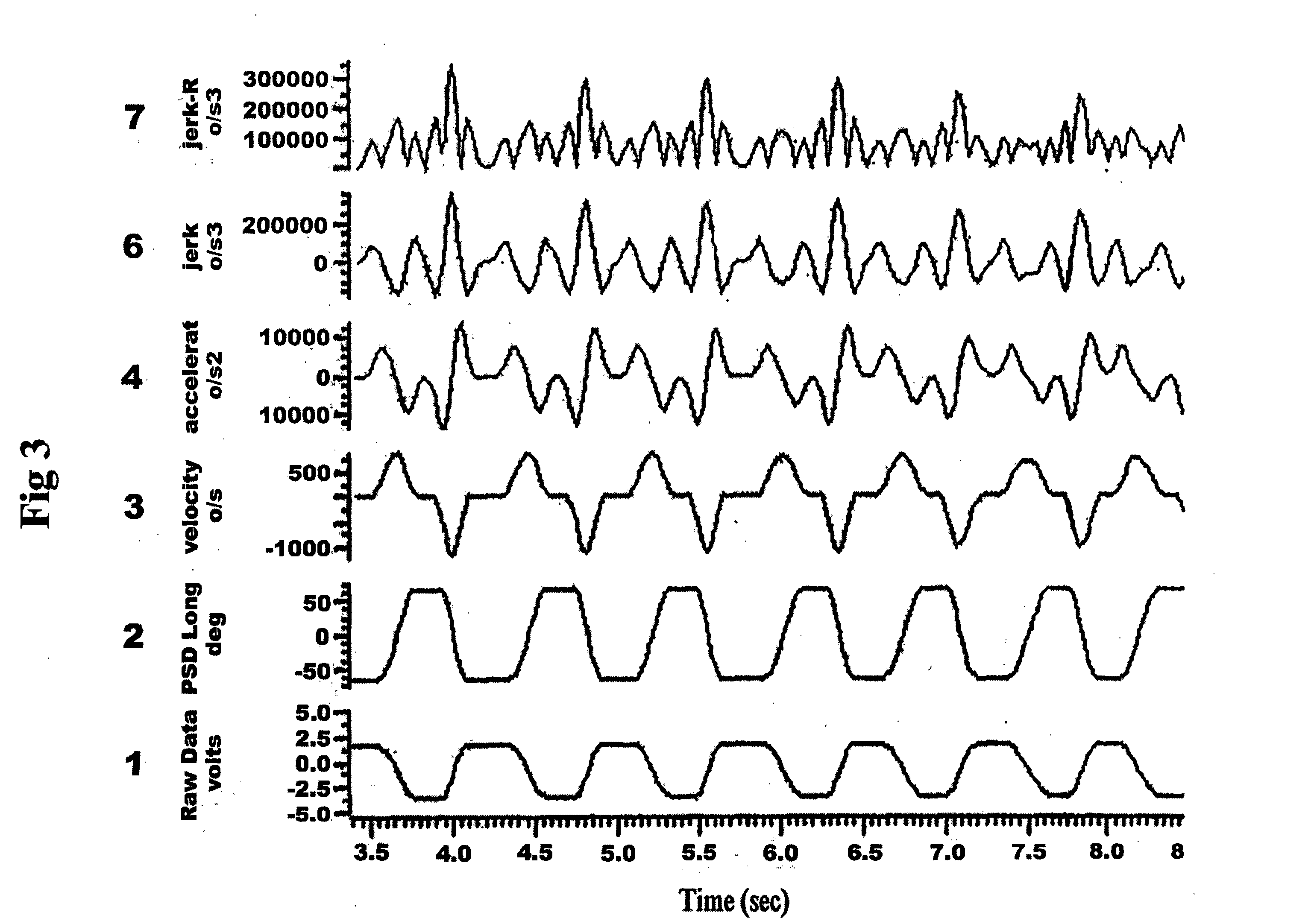Key device to measure pronation and supination of the forearm
a technology of pronation and supination of the forearm, which is applied in the field of quantifying the motor skills of the shoulders, wrists, hands, fingers, etc., can solve the problems of preventing the assessment of the type of disorder and its progression, preventing the selection and adjustment of therapy, and unable to easily adapt clinically to the test currently availabl
- Summary
- Abstract
- Description
- Claims
- Application Information
AI Technical Summary
Benefits of technology
Problems solved by technology
Method used
Image
Examples
Embodiment Construction
[0024] Referring to FIG. 1, the preferred embodiment of the device to measure pronation and supination of the forearm is shown. The subject is directed to alternate between moving a member 20 clockwise (“CW”) and counter-clockwise (“CCW”). The position of the member 20 is continuously measured and recorded. Calculations are performed in order to quantify the subject's movement.
[0025] The construction of the device used to gather data describing RAM and the method for using the data to precisely quantify the progression of a disease affecting motor skills is described by reference to the device designed to measure the CW-CCW cycles of a forearm (also know as the pronation-supination cycles). However, the same measurements can be performed with the finger or shoulder / elbow by modifying the forearm device as described herein.
[0026] In the exemplary embodiment of the present invention, the device 10 is mounted to a base 12 that permits the device to be firmly attached to a smooth, fla...
PUM
 Login to View More
Login to View More Abstract
Description
Claims
Application Information
 Login to View More
Login to View More - R&D
- Intellectual Property
- Life Sciences
- Materials
- Tech Scout
- Unparalleled Data Quality
- Higher Quality Content
- 60% Fewer Hallucinations
Browse by: Latest US Patents, China's latest patents, Technical Efficacy Thesaurus, Application Domain, Technology Topic, Popular Technical Reports.
© 2025 PatSnap. All rights reserved.Legal|Privacy policy|Modern Slavery Act Transparency Statement|Sitemap|About US| Contact US: help@patsnap.com



